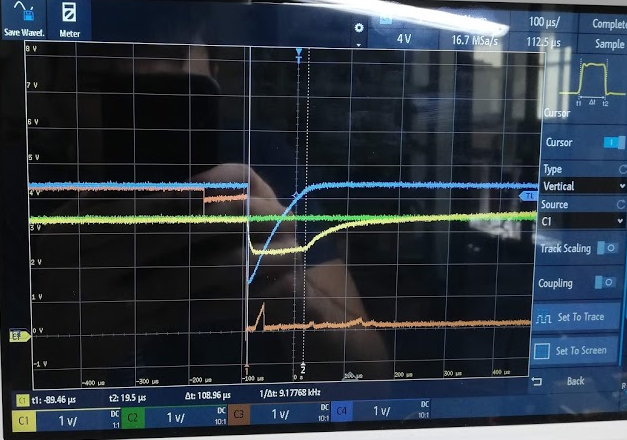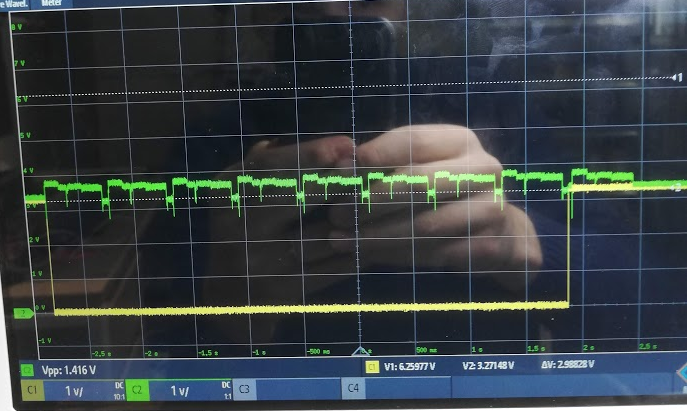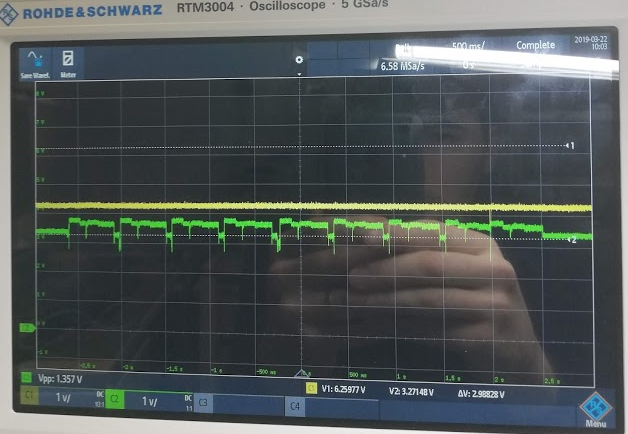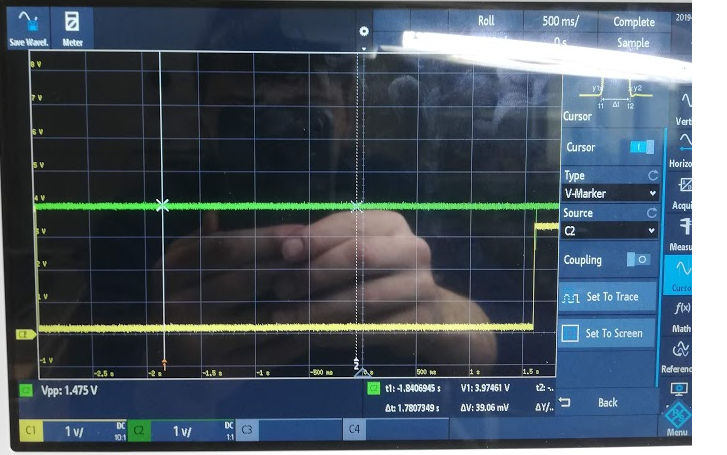Other Parts Discussed in Thread: MULTIPKGLDOEVM-823
Team,
When LDO is enabled (from +3.3V) and experiences input voltage drop (from 4.3V to ~2V), it sometimes goes into instability and remains in it.
LDO then has still 3.3V (no load) on output when disabled and has ripple voltage up to 0-3.3V when load of 5-100mA is applied. When it's enabled, instability seems to exist for 400-500ms and then disappears. The drop from 4.3V->2V happens when circuitry that has a lot of capacitance is being turned on. Also in this mode, LDO cannot be turned off.
What we found was instability starts when LDO has more than 12uF of capacitance on the output.
Who can help us to resolve this (would share schematic and layout offline).
Thanks
TI Customer





